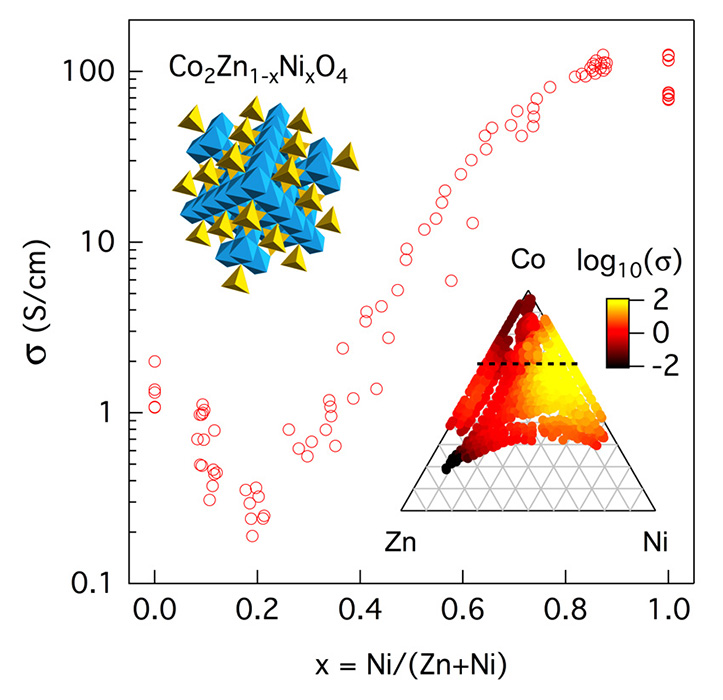Holes Are a Positive Thing: Designing Conductors for Solar Photovoltaics
Predicted by theory, and confirmed by experiments, novel materials are being discovered to improve photovoltaic efficiency.

The Science
Researchers successfully predicted that a class of materials called metal oxide spinels would possess the desirable property of electrical conduction by transparent “hole” carriers (carrying positive charge).
The Impact
The results illustrate the power of predictive design to use theory to develop new materials with specific functionality (the inverse design approach) by creating new transparent, electrically conducting oxides needed for contacts in current and next-generation photovoltaic (PV) devices.
Summary
In the quest for more efficient photovoltaic technologies, scientists at the Center for Inverse Design (CID) EFRC are using an unconventional approach to discover new materials for improved transparent semiconductors for solar energy. It is relatively easy to improve positive-charge (p-type) conductivity in small-gap semiconductors, such as silicon. Small quantities of atoms, called dopants, that pull electrons from the semiconductor are added, resulting in a concentration of positively charged “holes”—the charge carriers for p-type conductors. However, it is difficult to combine p-type conductivity and optical transparency in the wide gap materials that are desired for PV applications; wide gap materials could enable more efficient devices due to their high temperature and voltage performance. To solve this challenge, CID uses theory to establish design rules for desired properties and to screen candidate oxides, and then synthesizes and experimentally characterizes those with the best predicted properties. Theory predicted that spinel cobalt zinc oxide (Co2ZnO4) with additions of magnesium or nickel would increase hole concentration and thus conductivity. Experiments demonstrated a 20-fold increase in hole density with magnesium dopants and a 100-fold increase with nickel dopants. These easily grown oxides may enhance solar panel efficiencies over currently available transparent conducting oxides.
Contact
John Perkins
National Renewable Energy Lab
john.perkins@nrel.gov
Bill Tumas
Director of the Center for Inverse Design EFRC
Bill.Tumas@nrel.gov
Funding
DOE Office of Science, Office of Basic Energy Sciences, Energy Frontier Research Centers (EFRC) Program; Part of the research was performed at DOE Office of Science, Office of Basic Energy Sciences, Stanford Synchrotron Radiation Lightsource
Publications
Perkins, John D.; Paudel, Tula; Zakutayev, Andriy; Ndione, Paul F.; Parilla, Philip A.; Young, D.L.; Lany, Stephan; Ginley, David S.; Zunger, Alex; Perry, Nicola H.; Tang, Y.; Grayson, Matthew; Mason, Thomas O.; Bettinger, Joanna S.; Shi, Y.; and Toney, Michael F. “Inverse design approach to hole doping in ternary oxides: Enhancing p-type conductivity in cobalt oxide spinels”Phys Rev B, 84, 205207 (2011). [DOI: 10.1103/PhysRevB.84.205207]
Related Links
Center for Inverse Design EFRC
Stanford Synchrotron Radiation Lightsource
Highlight Categories
Performer: University , DOE Laboratory , SC User Facilities , BES User Facilities , SSRL



